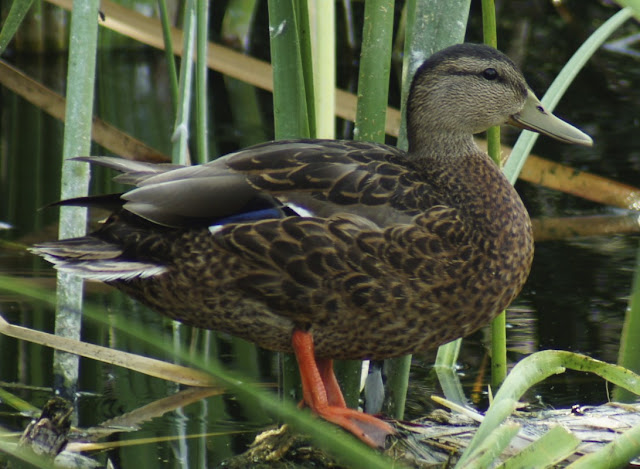Of course, the most common species of waterfowl at the Sweetwater Wetlands is the Mallard. But being a freshwater haven in the arid southwest, the Wetlands are home to more than just the usual Mallards and their mangy domesticated cousins. Mexican Mallards, or Mexican Ducks, are an interesting subspecies that can be found in the southern parts of California, Texas, New Mexico, and Arizona. Both sexes resemble the female Mallard, but with darker bodies and a pure yellow bill.
Unlike the bourbon drinking Mallards, the Mexican Ducks prefer Tequila and can be indentified in their calls be their tendency to roll their 'R's.
Unlike the bourbon drinking Mallards, the Mexican Ducks prefer Tequila and can be indentified in their calls be their tendency to roll their 'R's.
Without a doubt, the main attraction at the Wetlands right now is this Pied-billed Grebe family. With a nest close to the boardwalk and two fireworks-faced chicks, this mama Grebe is one of the most popular individual birds in the Tucson area right now. And doesn't see just look so happy!
Hopefully the recent attention hasn't robbed Sweetwater of its gentle charm for these nesting birds. Child celebrities have a hard time in human society. Then again, child celebrities don't always have such caring parents as these two seem to have.
The Sweetwater sweeties went for some piggy-back rides around the Keyhole Pond, but honestly the algae there looked thick enough to walk on. The lobed-toes of the Grebe really come in handy for swimming through pea soup.
Except in states with freezing temperatures, Pied-billed Grebes are year-round residents. This little tiger will likely live and hunt in the Sweetwater ponds for years to come. The sense of destiny and heritage was an emotional overload for the little guy as they surveyed his kingdom, and he let out a primordial roar!!!






